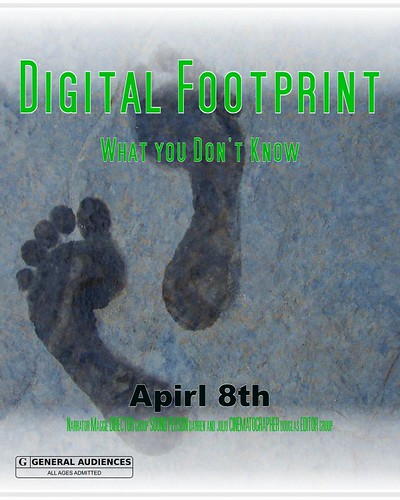
The assassination of Charlie Kirk, a prominent conservative activist, during a speaking engagement at Utah Valley University last week sent shockwaves across the nation. Kirk, 31, died after being shot in the throat while addressing an audience of approximately 3,000 students. The subsequent investigation has been marked by a rapid sequence of disclosures from federal authorities, shedding light on the alleged premeditation and the meticulous evidence collection efforts undertaken by the Federal Bureau of Investigation.
Following a swift 33-hour manhunt, law enforcement announced the arrest of Tyler Robinson, 22, in connection with the killing. Since his apprehension, FBI Director Kash Patel has been at the forefront of revealing critical details about the suspect’s alleged intentions and the array of evidence linking him to the crime. These revelations, often shared in interviews, have begun to construct a clearer picture of the events leading to Kirk’s death and the potential motivations behind it.
This article aims to provide a comprehensive, fact-based overview of the key pieces of evidence and investigative findings that have emerged in the initial stages of this complex case, as detailed by FBI Director Kash Patel and other authorities. From the suspect’s alleged written and digital declarations of intent to the forensic confirmation of destroyed evidence and early insights into his ideological leanings, these elements form the bedrock of the ongoing inquiry.

1. The Chilling Pre-Shooting Note Revealed
One of the most significant and unsettling revelations in the Charlie Kirk murder investigation centers on a note allegedly penned by the suspect, Tyler Robinson, prior to the shooting. FBI Director Kash Patel publicly disclosed the existence and content of this document, offering a stark glimpse into the accused’s alleged premeditation. According to Mr. Patel, the note, found at Mr. Robinson’s home—which he shared with his partner—explicitly stated, “I have the opportunity to take out Charlie Kirk and I’m going to take it.” This statement indicates a deliberate intent to harm Mr. Kirk, planned well in advance of the tragic event.
The discovery of such a note at the suspect’s residence, written before the fatal incident, is a critical piece of evidence for investigators. It provides a direct indication of Mr. Robinson’s alleged frame of mind and his specific target. Mr. Patel emphasized that this note was confirmed to have been written before the shooting, underscoring the premeditated nature of the alleged crime. This detail helps to establish a timeline of intent that precedes the physical act of violence.
The location of the note, within the suspect’s shared home, suggests a degree of planning and perhaps even a personal declaration of intent. While the FBI director did not elaborate on whether others were aware of this note prior to the shooting, its existence forms a powerful evidentiary component. It aligns with efforts by law enforcement to build a comprehensive narrative of Mr. Robinson’s actions and motivations leading up to the incident at Utah Valley University.
This revelation quickly became a focal point of public discussion, contributing to the understanding of the accused’s mindset. The FBI’s ability to locate and confirm the contents of this note, despite challenges, speaks to the thoroughness of their investigative posture in the immediate aftermath of the high-profile killing. It lays foundational groundwork for understanding the alleged premeditative aspect of the case.

2. Forensic Reconstruction of a Destroyed Message
Compounding the revelation of the pre-shooting note, FBI Director Kash Patel further disclosed a remarkable detail about its recovery: the note had been destroyed. Despite this attempt to conceal or eliminate evidence, the FBI’s forensic capabilities allowed for its reconstruction and confirmation. Mr. Patel stated, “We have since learnt the note – even though it was destroyed – we have found forensic evidence of the note and we have confirmed what the note said because of our aggressive interview posture at the FBI.” This highlights the advanced techniques employed by federal investigators to overcome challenges in evidence collection.
The director’s statement underscores the meticulous and persistent approach taken by law enforcement in this high-stakes investigation. The successful forensic recovery of a destroyed document demonstrates the technical prowess available to federal agencies, allowing them to extract crucial information even when deliberate efforts have been made to eradicate it. This process undoubtedly involved specialized forensic analysis to piece together fragments or traces of the original writing.
However, Mr. Patel did not offer specific details on how the physical note had been destroyed, nor did he clarify whether anyone other than the suspect knew about its existence or had seen it prior to the shooting. These unanswered questions remain part of the broader inquiry into the full scope of knowledge surrounding Mr. Robinson’s alleged intentions. The fact that its contents were confirmed, irrespective of its destruction, solidifies its standing as a key piece of evidence.
This aspect of the investigation showcases the FBI’s commitment to thoroughness, emphasizing that even seemingly erased evidence can be brought to light. It provides a strong basis for the assertions made regarding Mr. Robinson’s alleged premeditated intent, demonstrating that the authorities are relying on tangible, forensically verified facts rather than mere conjecture. The “aggressive interview posture” mentioned by Patel likely refers to intensive questioning of individuals who may have had knowledge of the note or the suspect’s activities.

3. A Text Message Echoing Intent
Further reinforcing the assertion of premeditated intent, FBI Director Kash Patel revealed that Tyler Robinson had also conveyed a similar message through a text exchange before the shooting. This digital communication mirrors the chilling content of the destroyed physical note, adding another layer of evidence to the investigative narrative. Mr. Patel explained that Mr. Robinson “had a text message exchange with another individual in which he claimed that he had an opportunity to take out Charlie Kirk and he was going to do it because of his hatred of what Charlie stood for.”
This text message suggests a repeated and consistent declaration of intent from Mr. Robinson to a third party. The inclusion of his “hatred of what Charlie stood for” provides an early, albeit broad, indication of a potential motive. This detail points towards a politically or ideologically driven animosity, which investigators are undoubtedly exploring as they delve deeper into the suspect’s background and beliefs. The consistency between the physical note and the text message strengthens the argument for premeditation.
An important question raised by this revelation, as noted by Mr. Patel, is why the person receiving the text message did not alert authorities. He acknowledged, “We don’t have an answer on that yet.” This aspect introduces a potential area of further investigation, focusing on the recipient of the message and any knowledge they may have had of Mr. Robinson’s plans. It highlights the complexities inherent in tracing digital communications and their implications.
The existence of both a written note and a text message containing similar threats indicates a pattern of expressing intent to harm Mr. Kirk. This dual confirmation of Mr. Robinson’s alleged plans underscores the thoroughness of the FBI’s digital forensics and evidence-gathering process. It also raises questions about the suspect’s comfort level in sharing such intentions with others, whether in written form or through electronic communication, prior to the shooting.
Read more about: Beyond the Spotlight: Unpacking Erika Kirk’s Surprising Reality TV Past Years Before Meeting Charlie Kirk

4. “Shocking Things” from Family and Friends
As the investigation into Charlie Kirk’s assassination deepened, authorities began to gain insights from those closest to the suspect, Tyler Robinson. FBI Director Kash Patel disclosed that investigators learned “shocking things when we spoke to his family and friends.” These personal accounts provided a crucial window into Mr. Robinson’s recent ideological shifts and behavior, offering context that could prove vital to understanding his alleged motivations.
Among the revelations from his family, investigators were informed that Mr. Robinson had “subscribed to Left-wing ideology and even more so in the last couple of years.” This specific detail, volunteered by his own family, indicates a marked change in his political orientation. It suggests a departure from potentially earlier beliefs or an intensification of certain political views over time, which his family members found noteworthy enough to share with law enforcement during interviews.
The involvement of family and friends in cooperating with authorities, even while Mr. Robinson himself has reportedly not cooperated, is a significant development. Their willingness to share observations about his ideological leanings and behavioral changes provides investigators with valuable background information. These insights can help piece together a psychological profile and contribute to a more comprehensive understanding of the path that allegedly led Mr. Robinson to commit the crime.
The phrase “shocking things” implies that the information provided by these close contacts was unexpected or deeply concerning. This suggests that Mr. Robinson’s alleged radicalization or shift in ideology may have been noticeable to those around him, yet perhaps not fully understood in its potential implications until after the tragic event. The collective input from his inner circle forms a critical component of the ongoing effort to establish a motive and contextualize the suspect’s actions.
Read more about: Totally Tubular or Totally Taboo? 14 Wild ’80s Habits That Would Get You Side-Eyed Today!

5. The Discord Group Chat and Digital Trail
Mr. Robinson’s digital footprint, particularly on the messaging platform Discord, has emerged as another critical area of investigation. FBI Director Kash Patel indicated that “there were more than 20 people in a group chat with Mr Robinson on the site Discord,” and the FBI was actively pursuing legal avenues to gain access to these communications. This large group chat suggests a significant online social circle for Mr. Robinson, whose interactions may contain further clues regarding his mindset and activities.
Crucially, reports from the Wall Street Journal indicated that Mr. Robinson allegedly confessed to the killing within an online Discord chat merely hours before his arrest. The message reportedly stated: “Hey guys, I have bad news for you all. It was me at UVU yesterday. I’m sorry for all of this.” Discord subsequently provided this message to authorities and has been cooperating closely with law enforcement, affirming the platform’s role in the investigation.
Interestingly, earlier in the investigation, Mr. Robinson reportedly engaged in a deceptive exchange on Discord. After surveillance images of the suspect were released, he joked with friends about his resemblance to the person being sought. One user shared the images and tagged Mr. Robinson, writing “wya” (where you at) with a skull emoji. Mr. Robinson allegedly replied, “My doppelganger’s trying to get me in trouble,” and further joked that he needed to “get rid of this manifesto and exact copy rifle” he had. Another user jokingly wrote, “Tyler killed Charlie!!!!” to which Robinson only later admitted the truth.
This digital trail reveals a complex picture of Mr. Robinson’s online behavior, ranging from initial denial and joking to an alleged full confession. The group chat and his messages provide direct insight into his communication style, his awareness of the manhunt, and ultimately, his alleged acknowledgment of guilt. The cooperation from Discord has been instrumental in securing this critical evidence, allowing investigators to reconstruct aspects of his activities and communications in the hours following the shooting.
Read more about: Are You That Colleague? Unmasking the 14 Office Habits That Unnerve Coworkers and Bosses
6. Crucial DNA Evidence Linking Suspect to Crime
Beyond digital communications and personal testimonies, investigators have also uncovered compelling physical evidence directly linking Tyler Robinson to the crime scene. FBI Director Kash Patel disclosed that DNA matching Mr. Robinson was discovered on a towel and a rifle found in nearby woodland. This forensic evidence provides a tangible connection between the suspect and the alleged murder weapon, significantly strengthening the case against him.
Federal officials further detailed these findings, announcing that a screwdriver containing Mr. Robinson’s DNA was recovered from the rooftop of a building at Utah Valley University – the very location from which the fatal shot was fired. This specific piece of evidence places Mr. Robinson directly at the vantage point of the shooting, a critical link in the chain of events. The presence of his DNA on both the tool and the weapon package indicates his alleged direct involvement in the preparation and execution of the crime.
The firearm, a bolt-action rifle believed to be the murder weapon, was found wrapped in a towel that also bore Mr. Robinson’s DNA. While the firearm itself was still being processed for additional forensic evidence at the time of the announcement, the DNA on the towel that contained it offers a powerful corroboration of his alleged contact with the weapon immediately after the shooting. This suggests an attempt to conceal or discard the evidence, which ultimately failed due to the meticulous efforts of law enforcement.
Collectively, the DNA evidence found on the rooftop screwdriver and the towel used to wrap the discarded rifle forms a robust physical link between Tyler Robinson and the assassination of Charlie Kirk. These forensic discoveries are difficult to dispute and provide concrete, scientific corroboration for the allegations against him. They are instrumental in establishing his presence at the scene and his handling of key items related to the commission of the crime, forming a central pillar of the prosecution’s case.
Read more about: Beyond the Veil of Normalcy: Unmasking 14 Infamous Serial Killers and the Chilling Secrets of Their Crimes

7. Suspect’s Refusal to Cooperate with Authorities
A significant challenge in the ongoing investigation into Charlie Kirk’s assassination has been the suspect, Tyler Robinson’s, steadfast refusal to cooperate with law enforcement since his arrest. FBI Director Kash Patel, in multiple public statements, confirmed that Mr. Robinson has not been forthcoming. This non-cooperation stands in stark contrast to the assistance provided by those closest to him, creating a critical information gap directly from the accused.
Utah Governor Spencer Cox echoed these observations, stating, “He has not confessed to authorities. He is not co-operating but all the people around him are co-operating.” This collective cooperation from Mr. Robinson’s inner circle—his family, friends, and partner—has been instrumental in providing investigators with a wealth of background information and context, allowing them to meticulously piece together the narrative without direct input from the central figure.
This lack of cooperation, while not uncommon in high-profile criminal cases, adds an additional layer of investigative difficulty. It underscores the importance of the thorough evidence collection and forensic analysis that the FBI has emphasized, ensuring the case is built on verifiable facts rather than statements from a potentially uncooperative suspect, and establishing a clear, undeniable link between Mr. Robinson and the events that transpired.

8. The Unanswered Questions of Potential Accomplices
The investigation has also actively explored the critical question of whether Tyler Robinson acted alone or if there was a broader network of individuals involved in the planning or execution of Charlie Kirk’s murder. Deputy FBI Director Dan Bongino openly raised the possibility of an accomplice, indicating that the bureau is diligently scrutinizing Mr. Robinson’s social circles for any prior knowledge of his intentions.
Mr. Bongino articulated a crucial line of inquiry, asking whether Mr. Robinson’s friends might have heard his threats and dismissed them as mere jokes. “Did they … hear it and think it was a joke?” he posited to Fox News. “That is what we’re trying to find out now.” This line of questioning delves into the subtleties of interpersonal communication and the potential for perceived idle threats to escalate into tragic realities, underscoring the complexities of assessing intent within social dynamics.
Furthermore, Deputy Director Bongino assured the public that the FBI is actively investigating the existence of any “larger network here,” promising to disclose such information as soon as it becomes available. This suggests that investigators are not limiting their scope to Mr. Robinson alone but are comprehensively mapping his connections and communications to ascertain if anyone else shared in his alleged planning or was aware of his extreme intentions. The FBI’s commitment to transparency on this front is crucial for public trust.
Read more about: Beyond the Limelight: How 13 Stars Navigated the Unspeakable Tragedy of a Family Member’s Murder

9. Suspect’s Reported “Obsession” with Kirk and Prior Warning Signs
Beyond the immediate evidence, investigators have begun to uncover a history that points towards Tyler Robinson’s alleged profound animosity towards Charlie Kirk, bordering on an “obsession.” Deputy FBI Director Dan Bongino revealed that the FBI’s examination of Mr. Robinson’s digital trail, which remains under active review, suggests this intense focus on Mr. Kirk. This deep dive into his online presence aims to establish the extent and nature of this fixation.
The concept of an “obsession” introduces a psychological dimension to the motive, moving beyond mere ideological disagreement to a potentially more consuming and personalized animosity. This long-standing digital footprint could contain crucial insights into how Mr. Robinson’s views evolved, what specific content he engaged with regarding Mr. Kirk, and the timeline of his growing disdain. Such details are vital for understanding the full context of his alleged actions.
Moreover, Mr. Bongino disclosed that there were “multiple warning signs” in Mr. Robinson’s life that, in retrospect, might have indicated his escalating ideological intensity. Among these, co-workers reportedly informed investigators that Mr. Robinson would consistently “walk away” when political topics arose in conversation. This behavior suggests a potential avoidance of direct political discourse, possibly indicating a deeply held, perhaps unarticulated, radicalized viewpoint. The FBI’s meticulous reconstruction of Mr. Robinson’s history aims to connect these elements into a coherent narrative.

10. FBI Director Patel’s Communications Under Scrutiny
The high-profile nature of Charlie Kirk’s assassination has placed the FBI and its leadership, particularly Director Kash Patel, under intense public and political scrutiny, especially concerning their communications strategy during the initial stages of the investigation. Mr. Patel has actively sought to defend his handling of the case, emphasizing the speed of the manhunt while also acknowledging missteps in public announcements.
Mr. Patel highlighted the rapid apprehension of Mr. Robinson, noting, “We apprehended our suspect in 33 hours because we were transparent and open.” He drew a comparison to historical cases like the Boston Marathon bombing and the Luigi Mangione manhunt, which took five days, to underscore the swiftness of the FBI’s response, aiming to counteract mounting criticism regarding the investigation’s initial disclosures.
However, the director faced significant backlash for a post on X (formerly Twitter) made early in the investigation. He had initially announced that a suspect had been taken into custody, only to issue a correction 90 minutes later, stating that the person had been released after questioning and was not involved. Mr. Patel later conceded, “Could I have worded it a little better in the heat of the moment? Sure. But do I regret putting it out? Absolutely not.”
Critics, including former Houston and Austin police chief Art Acevedo, condemned Mr. Patel’s communications. Acevedo stated, “It’s unconscionable that at a historical high point for domestic and foreign threats, the FBI, the lead agency in combating them, is led by someone over his head.” This public criticism underscores the immense pressure on the FBI to maintain accuracy and credibility in high-stakes investigations, with Mr. Patel scheduled to testify before congressional committees regarding his oversight.

11. The Role and Cooperation of the Suspect’s Partner
Amidst the complex tapestry of the investigation, the role of Tyler Robinson’s romantic partner, with whom he shared a home, has garnered specific attention. Utah Governor Spencer Cox provided clarity on this relationship, explaining that the individual is “transitioning from male to female” and has been exceptionally cooperative with law enforcement, expressing genuine shock at the tragic events.
Governor Cox explicitly stated that Mr. Robinson’s partner had no prior knowledge of the attack and was “shocked when they found out about it.” This affirmation from a key individual living with the suspect provides crucial context, suggesting that Mr. Robinson’s alleged plans were kept highly concealed from his closest confidant, or that the partner did not perceive any imminent threat from Mr. Robinson’s ideological shifts. Their cooperation, therefore, becomes invaluable in building a comprehensive picture of Mr. Robinson’s activities and state of mind leading up to the assassination.
The distinction that the partner was a “romantic partner” rather than just a roommate, as initially described, adds a layer of intimacy to the relationship, making their lack of awareness about the alleged plot even more striking. The partner’s willingness to assist authorities despite the personal anguish and proximity to the accused has been lauded by officials, further aiding investigators in their relentless pursuit of truth and motive without facing obstruction from this quarter. This open collaboration offers a vital perspective on Mr. Robinson’s personal life and alleged covert planning.

12. Tyler Robinson’s Personal History and Path to Arrest
The individual profile of Tyler Robinson, beyond his alleged ideological shifts, paints a picture of a young man whose life took a drastic turn. Neighbors described him as someone who was once close to his parents and two younger brothers, often participating in family outings like camping or hunting, suggesting a seemingly conventional upbringing before the radicalization process took hold.
Academically, Mr. Robinson demonstrated considerable promise, having been a high school honor roll student who achieved scores in the 99th percentile nationally on standardized tests. He was even admitted to Utah State University in 2021 on a prestigious academic scholarship. However, his academic trajectory changed dramatically as he attended for only one semester before dropping out, a period that Governor Cox linked to his radicalization. He is currently enrolled in an electrical apprenticeship program.
The circumstances of his apprehension also reveal significant family involvement. After the FBI released surveillance images, someone close to his family recognized Mr. Robinson. This recognition, coupled with the efforts of his father, convinced him to turn himself in. A law enforcement source revealed that the family had contacted their church bishop when Mr. Robinson threatened to take his own life, showcasing a moment of crisis and familial intervention.
This personal background, from his early life to his educational shifts and the family’s agonizing decision to facilitate his surrender, contributes to a multifaceted understanding of Tyler Robinson. It allows investigators to contextualize his alleged actions within a broader narrative of personal change, ideological immersion, and the difficult choices faced by those closest to him as the manhunt intensified. He is expected to be formally charged, bringing the case into its next legal phase.
Read more about: Marjorie Taylor Greene’s Call for a ‘National Divorce’: An In-Depth Look at the Proposal, Its Roots, and Reactions in a Divided America
13. Debating Motive: Ideology, Obsession, and Kirk’s Public Persona
As the investigation progresses, the central question of “why” remains a subject of intense public and official debate, intertwining Tyler Robinson’s alleged radicalization with Charlie Kirk’s provocative public persona. Utah Governor Spencer Cox emphasized that authorities are diligently working to determine the precise factors that led to the fatal shooting and the extent to which political ideology played a role.
The debate over motive is fueled by Kirk’s prominent status as a conservative activist, known for his unfiltered and often controversial opinions on heated topics such as abortion, immigration, and gender identity. These stances frequently elicited fierce criticism, particularly on college campuses he visited. His death, by a single gunshot during a speaking engagement, shocked the nation, prompting vigorous discussions about the alleged motivations driving Robinson.
A moment just before the shooting has gained particular relevance: Kirk was asked by an audience member about the number of mass shootings carried out by transgender people in the United States, to which he responded, “Too many.” While authorities have emphasized that Robinson’s partner has no connection to the attack, this exchange, combined with Robinson’s alleged leftist ideology and hatred for what Kirk “stood for,” adds layers to the ongoing inquiry into motive.
Governor Cox succinctly captured the investigative challenge, stating, “The why behind this … we’re all drawing lots of conclusions on how someone like this could be radicalized. And I think that those are important questions for us to ask and important questions for us to answer.” The charging of Mr. Robinson, expected to occur on Tuesday, is anticipated to bring more information to light as the legal process advances.
The tragic assassination of Charlie Kirk stands as a stark reminder of the volatile intersection of political discourse, online radicalization, and individual vulnerability. As federal and local authorities continue to meticulously piece together the full narrative, the revelations from this ongoing investigation serve as a sobering reflection on the forces that can drive an individual to such extreme acts. The public, and indeed the nation, awaits further clarity as the legal proceedings commence, hoping for a comprehensive understanding that can perhaps prevent future tragedies. The commitment to factual and objective reporting, characteristic of the New York Times, remains paramount as these complex events continue to unfold.




